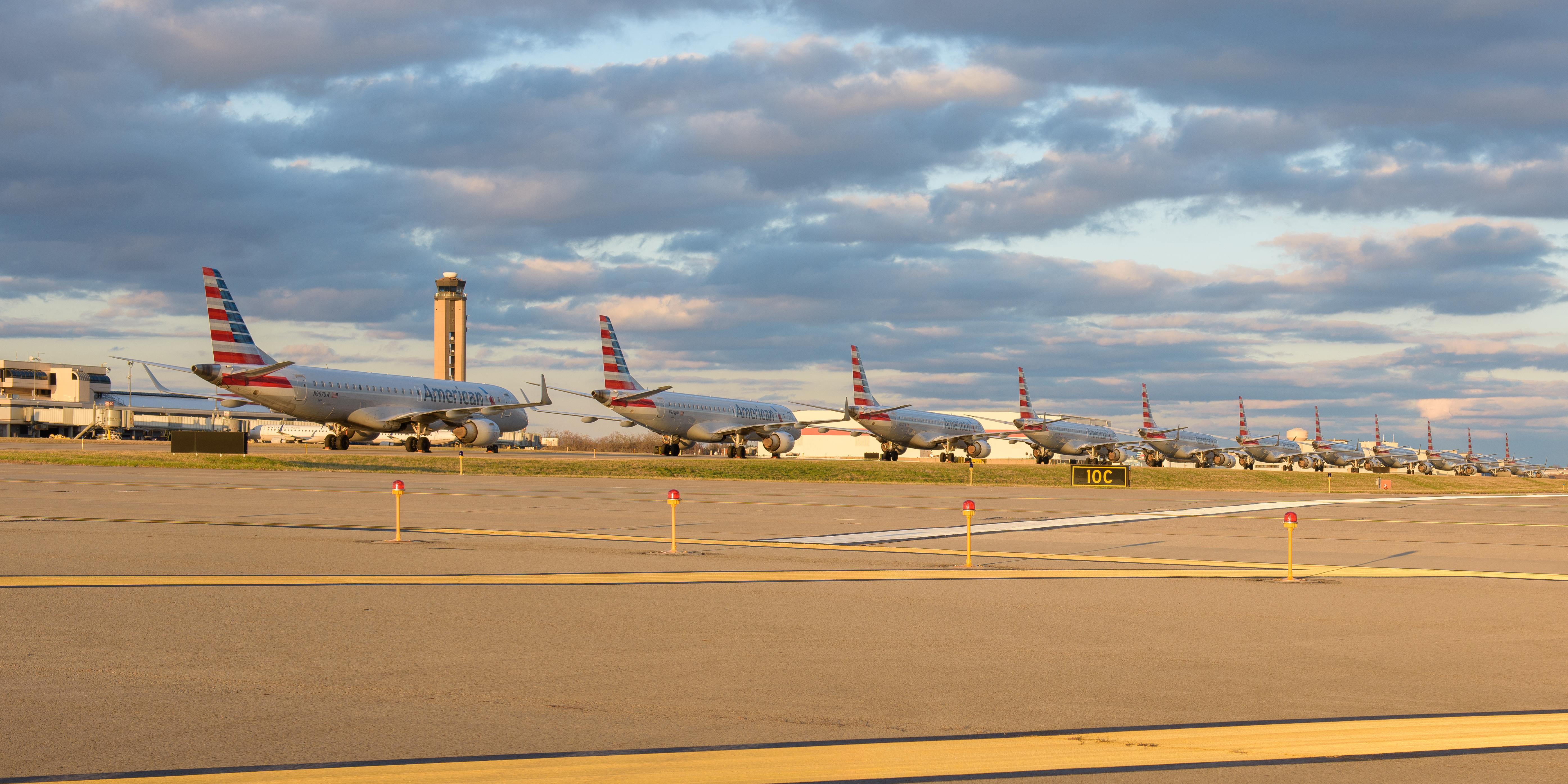Fleet Groundings Slash MRO Spend, But Promising Recovery May Be On The Horizon

In an unintentionally prophetic survey conducted last year, Oliver Wyman asked MRO industry participants about their preparation for an economic downturn and which actions they planned to take in case of a recession. As it turns out, the responses greatly reflected how operators are now reacting in the face of the novel coronavirus crisis.
“We’re following those playbooks,” says Brian Prentice, a partner at Oliver Wyman. “We’re parking aircraft, reducing planned expansions and innovations, renegotiating existing agreements and trying to introduce operational efficiency measures. And the last thing that we really want to do is reduce headcount.”
Last month the consultancy released an updated MRO forecast taking into account the effects of the novel coronavirus crisis, and as the situation stretches on, Oliver Wyman is adapting its predictions even further. It now expects the global fleet to grow by 4,500 fewer aircraft by 2030, driven by retirements of older aircraft, an increase in aircraft storage and a reduction in deliveries over the next decade.
These fleet changes are expected to cause a drop of more than 50% in MRO spend, with Oliver Wyman now forecasting $42.3 billion in 2020 MRO spend post-COVID compared to its initial forecast of $91.2 billion. All market segments are expected to be hit hard: Oliver Wyman says MRO spend for engines will drop to from $43.5 billion to $19.7 billion, component will drop from $16.3 billion to $9.7 billion, airframe will drop from $17.9 billion to $6.1 billion and line will drop from $13.5 billion to $7.2 billion.
According to Ken Aso, a partner at Oliver Wyman, the situation will cause an uptick in used serviceable materials (USM). “Airlines will clearly have an increased preference for cheaper material, given their cost-consciousness. It’ll take a while for that demand side to manifest because they’re not going to do any MRO if they can help it over the next 12 months,” he says. “They’re going to burn green time and they’re going to use aircraft that have components with green time, so they don’t want to spend a dollar of MRO. But if they do, they want USM.”
Aso adds that there will be a lag for parked aircraft to be retired, parted out and certified for USM because the supply side will not be able to react immediately to “a lot of dead inventory.”
Also trying to offset losses will be OEMs, which Oliver Wyman thinks will continue encroaching into the aftermarket to bolster their earnings. Meanwhile, demand for consolidation and mergers and acquisitions may be affected as well.
“M&A may suffer a little bit, as I’ve been talking to private equity firms and strategic buyers in the last couple of weeks,” says Prentice, noting that he is seeing concern about the crisis timeline and what the world will look like post-COVID. “I think we’ll see some distressed purchasing and consolidation. I do think that companies and MRO providers that have strong relationships with their clients, differentiated products and are able to weather the storm will come out very strong on the other side.”
While recovery will be difficult, Oliver Wyman believes the MRO market will rebound and continue its growth, with a projected 2.7% compounded annual growth rate from 2022-30. By 2030, it forecasts an MRO market of $113 billion—a reduction of its initial projection of $130 billion, “but still a pretty strong and robust market.”





